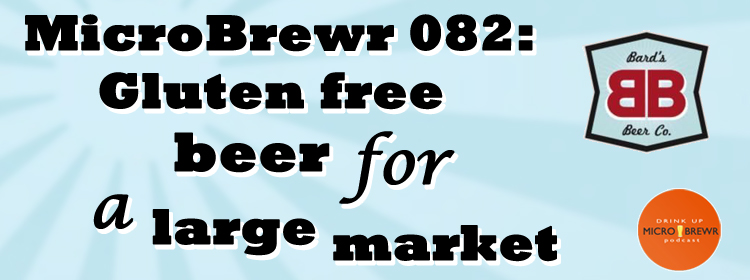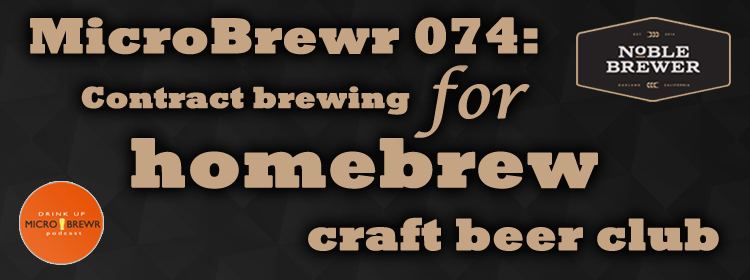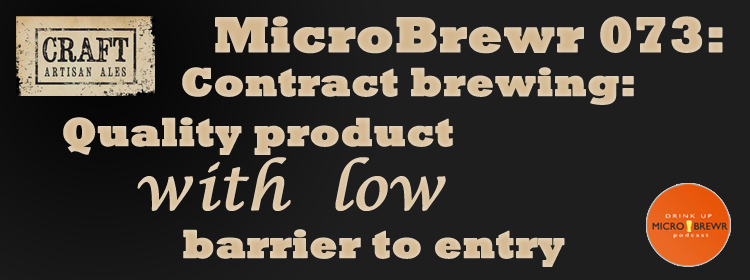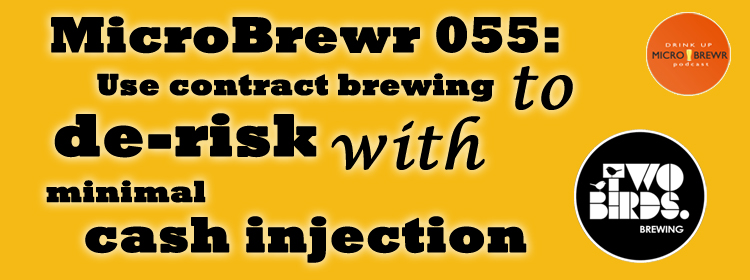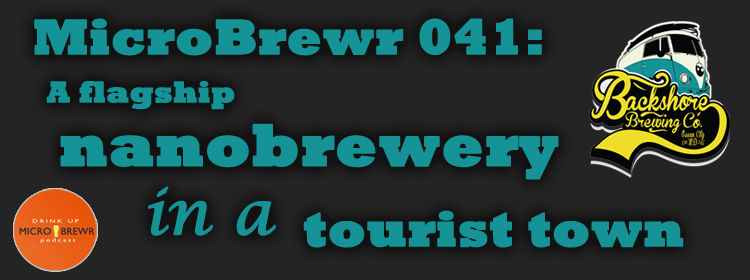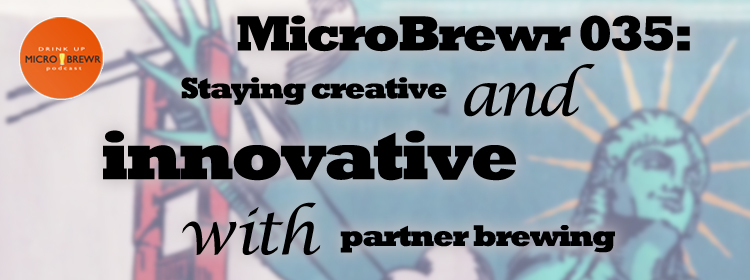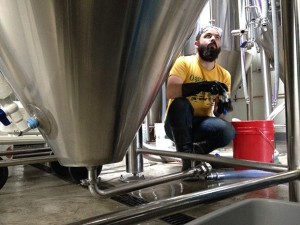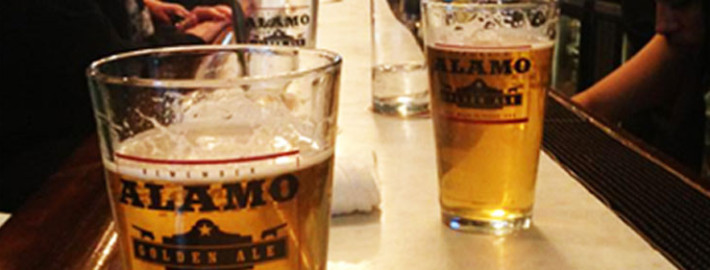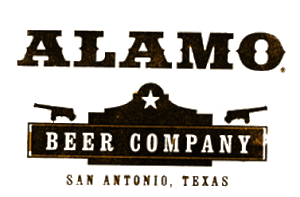MicroBrewr 089: Make whiskey from high-quality craft beer
Podcast: Play in new window | Download | Embed
Subscribe: RSS
Over a few beers, Tim Obert’s friend from college, Clint, told him that whiskey is actually made from cheap beer. They got to thinking, why not make whiskey from high-quality craft beer? Thus was born Seven Stills of SF, in San Francisco, California.
“I wish I would’ve taken on investment sooner.” [Tweet This]
Whiskey is a distilled spirit made from the fermented mash of usually malted grain, like beer. At first Tim and Clint were homebrewing in the backyard of Clint’s parent’s home, and “distilling that out, not really with the intention of starting a company, but just to see what happens.”
“Distilling,” says Tim, “is a hundred times simpler than brewing.”
To make whiskey from beer, they increase the temperature of beer to evaporate ethanol. The gaseous ethanol is then cooled to condense it back into a liquid. Different temperatures and different points in the process evaporate different material and different quality flavor.
“After a while,” recalls Tim, “Clint and I ended up having 30 different whiskeys and they were totally unique and were all, in my opinion, outstanding.”
“Everything that I had researched said that the base beer doesn’t have an impact on the flavor of the whiskey, which we’ve realized is just completely untrue. We can distill something like a chocolate oatmeal stout for instance, versus and IPA and there is no way that you could not tell the difference,” Tim laughs. “They’re completely different whiskeys.”
RELATED: MicroBrewr 047: A forty-year career at the epicenter of craft beer
Clint contributed the money he had saved for grad school, Tim pitched in a portion of his life savings, and they started Seven Stills of SF. For 2 years, they had a contract brewery make the beer. Then they had a contract distillery use the craft beer to make whiskey.
Seven Stills of SF currently produces about 120 cases of whiskey per month. They’re trying to increase production by 8 times.
They will be able to do it, now that they have their own 15-BBL brewhouse with fermenters and bright tanks. And they recently bought the largest still in San Francisco, a 300-gallon pot still.
They also have an entirely other line of vodka and bitters. Whereas whiskey is made from various grains, vodka is made from corn. Most of their bitters are made from vodka.
“Just for consistency sake, it makes sense to keep the 2 separate,” says Tim. “That’s part of the reason we hired different designers to work on the [labels on the] bottles.”
With so much expansion and growth, Tim says one thing he wishes he would have done differently was taken on investors sooner.
RELATED: MicroBrewr 067: How to find investors for a brewery
“We’ve been trying to grow off of just what we put into the company organically for the last 2 years, and it’s just painfully slow.”
Getting investors urged Seven Stills of SF to:
- Develop a business plan
- Calculate budgets
- Get organized
- Get something bigger off the ground
Part of having investors is putting together an advisory board. A formal advisory board is a set of people to whom you can seek advice on the business. Tim recommends finding experts in different areas such as:
- Banking
- Design
- Marketing
- Social media
“I definitely wouldn’t recommend giving up too much equity right off the bat,” advises Tim, “but give them something, and incentive instead of just getting counsel from them.”
“Just kind of building a team you can go and ask questions about when you have something come up. Because, I mean, it’s kind of stupid to keep reinventing the wheel with all this stuff.”
Brewery specs:
Kettle size: 15 BBL.
Size and quantity of fermentation tanks: 2, 15-BBL fermenters.
Size and quantity of bright tanks: 2, 15-BBL bright tanks.
Annual brewing capacity/last year’s production: 3,120 BBL/year of beer. 4,836 gallons/year of whiskey.
Square footage: 4,400 sq. ft.
Years in operation: 2 years (opened August 2013).
Listener question:
From Jimmy Batte: What’s the best advice you have been given or have to give since operating a brewery?
Can’t-go-without tool:
Book recommendation:
- Alt Whiskeys: Alternative Whiskey Recipes and Distilling Techniques for the Adventurous Craft Distiller by Darek Bell, Amy Lee Bell, and Pete Rodman.
- The Startup Playbook: Secrets of the Fastest-Growing Startups from Their Founding Entrepreneurs by David Kidder.
- Raising the Bar: Integrity and Passion in Life and Business: The Story of Clif Bar Inc. by Gary Erickson.
- Mission in a Bottle: The Honest Guide to Doing Business Differently–and Succeeding by Seth Goldman and Barry Nalebuff.
Check out the entire list of recommended books, click here.
An upcoming beer style:
Craft beer whiskey
Other resources:
- Whiskey Informer, whiskey reviews, whisky reviews, and whiskey-like products.
- Anchor Distilling Company, San Francisco, California.
- Distillery No. 209, San Francisco, California.
- Alamanac Beer Co., San Francisco, California.
- Hermitage Brewing Company, San Jose, California.
- The Bruery, Orange County, California.
- Sante Adairius Rustic Ales, Capitola, California.
- California’s 10 Best Breweries, Symmetry50, February 11, 2015.
- Russian River Brewing Co., Santa Rosa, California.
- Snake Bite, TW Pitcher’s Brewing Company, Saint Helena, California.
- CircleUp, equity-based crowdfunding.
- businessadvising.org, volunteer business advisors, mentors, and concultants.
- Corsair Artisan Distillery, Nashville, Tennessee.
- Future directions for brewers – Go gluten free, DSM.
You can reach Tim Obert and Seven Stills of SF at:
Sponsors:
Please support our sponsors.
Support MicroBrewr
Help keep MicroBrewr on the air. CLICK HERE for ways you can help.




